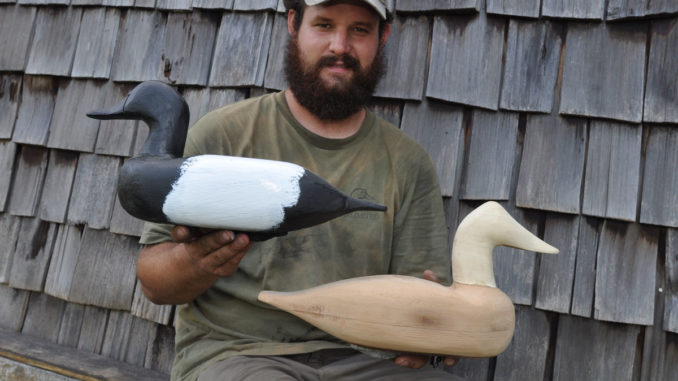
Diving ducks come into the decoys flying extremely low, often barely above the surface of the water. When using large decoy spreads, low-flying waterfowl like scaup and canvasback can draw fire from hunters that riddles decoys with shot. That’s one reason Holman Byrd makes many of his own diving duck decoys.
Byrd uses solid foam Herter’s decoys or fills any decoys with shot holes with expanding, sealing foam from an aerosol can. The best replacement option for Herter’s decoys, which have not been manufactured for years, is Fowl Fooler decoys (www.fowlfoolers.com), which are burlap-wrapped, foam decoys similar to the old Herter’s style.
Byrd has also started making his own decoys, which are patterned after the wooden or cork decoys used by waterfowl gunners of yesteryear. Common components are cedar bodies and tupelo heads. The bodies are made in upper and lower sections that are hollowed out with a router, then glued together to save weight.
“I also make decoys out of cork, which is getting hard to find,” Byrd said. “Plastic decoys are lighter, but cork or wooden decoys float with more realism, and they are indestructible. Repairing hollow, plastic decoys takes time, and we are always filling them with foam or using hot glue to patch them. We have made several dozen decoys and hope one day to hunt over an entire spread of handmade decoys.”


Be the first to comment